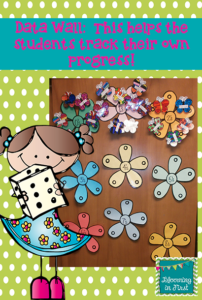Collecting data is not necessarily every teacher’s cup of tea, but in today’s teaching climate, it’s definitely a necessity. After all, good data can provide important information to teachers and students and go a long way toward improving teaching and learning. And if keeping track of all the streams of data coming your way is not exactly your strong suit, here are a few hacks we found to make the process easier and maybe just a little bit more fun.
1. Teacher Binder for Student Data
In the world of data collection, this binder is going to be your best friend. Think of it as command central for all things numerical. This version has sections dedicated to parent communication, behavior and assessment data—all brilliantly organized and easy to set up for even the most organizationally challenged.

SOURCE: First Grade Smiles
2. Data Tracking Sheets for Your Binder
In addition to the documents included above, you can add these documents to your fabulous binder as well.
![]()
SOURCE: Brandy Shoemaker
3. Color-Coded Data Clipboards
If you teach special sections or small-group classes, you can keep each student’s data conveniently attached to a clipboard—color coded so there’s no need to rifle through to make sure you’ve got the right one—hung on a pegboard. These are quick and easy to grab so you can take notes when meeting with individual students.
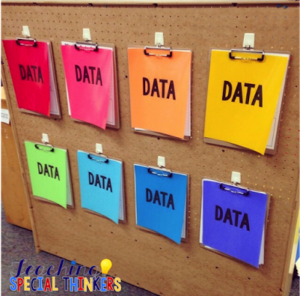
SOURCE: Teaching Special Thinkers
4. Storage Crates
Often you want to hold on to papers after you record the numbers. Rather than keeping copies of assessments in your teacher binder, making it bulky and overstuffed, this crate system is a great way to keep track of work samples and other portfolio items.
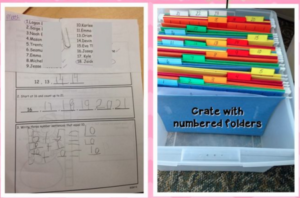
SOURCE: First Grade Smiles
5. Labeled Bins
If your school requires weekly data reports, you can store them here for easy access. Each student can collect his or her report to take home on the assigned day.
Also, if your students use their own folders to track data, this is a handy storage place. Kids can access their folders when they are needed, but there’s no chance of them getting crumpled into their desks or being lost.
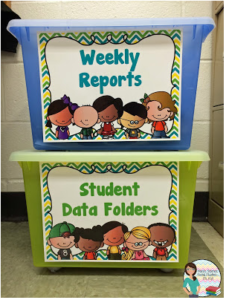
SOURCE: Math, Science, Social Studies … Oh My!
6. Sticky-Note System
Be still our hearts: sticky notes! They’re right up there in the popularity ranks with ziplock bags for most teachers. This is hands-down the easiest, quickest way to keep track of anecdotal notes and informal observations.
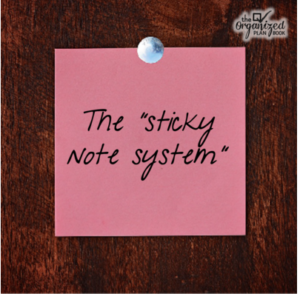
SOURCE: The Organized Plan Book
7. Easy Bar Graph
Under the category “Work smarter, not harder,” this genius idea enlists your students’ help to record their individual data onto a strip of graph paper, which the teacher then pastes together inside a manila folder. Voilà! Instant data bar graph!
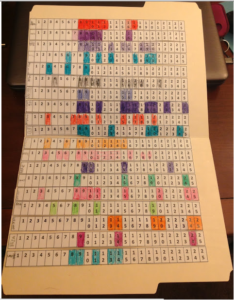
SOURCE: Tonya’s Treats for Teachers
8. Data Folders for Students
Keeping track of their own data (for certain types of assessments like spelling tests, math facts, reading fluency scores, etc.) gives students ownership of their work and progress and provides them an opportunity to work on their graphing skills to boot!
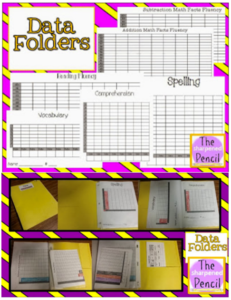
SOURCE: The Sharpened Pencil
9. More Data Tracking Sheets for Students
We like these sheets from blogger Bunting, Books, and Bright Ideas as well!
![]()
SOURCE: Bunting, Books, and Bright Ideas
10. Citizenship Binder
Another genius hack! A tracking system for student accountability—all collected by students as part of weekly jobs. Kids take responsibility for monitoring their own behavior, organization and homework. What a great tool for cultivating ownership of their own learning!
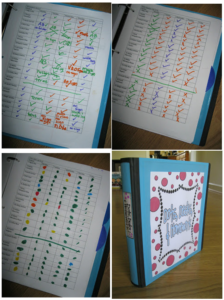
SOURCE: One Teacher’s Take
11. Data Walls: A Touchy Subject
There’s no doubt that publicly displaying student achievements on classroom data walls as a means of motivating students is a controversial subject. However, we found some adorable examples of data walls that might just do the trick. The key to these boards is that they are limited to a single skill set of foundational skills that mostly require memorization. Giving students permission to monitor their own progress makes it feel more like a game than a report card.
12. Flying High
Kids can add their own bow to the tail of each kite as they master the skills listed.
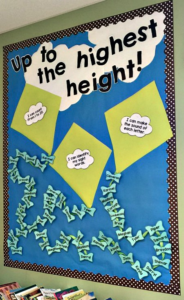
SOURCE: Creativity to the Core
13. Fact Family Flowers
Students get to decorate and attach their own butterflies to each fact family flower.
14. Sight Word Gumball Machines
Each student gets to add a gumball to the gumball machine as they master each sight word.
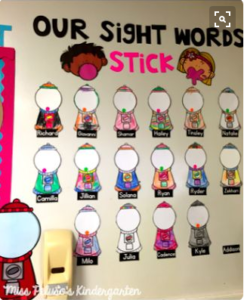
SOURCE: Miss Peluso’s Kindergarten
15. Letter/Sound Correspondence
Early learners can add a banana with their name on it to each cluster as they master the individual letter sounds.
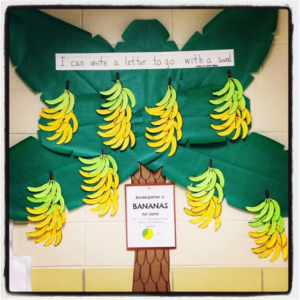
SOURCE: Greater Boston DSAC Data
16. Scooping Up Sight Words
Kids can add their favorite scoop to each sight word ice-cream cone.
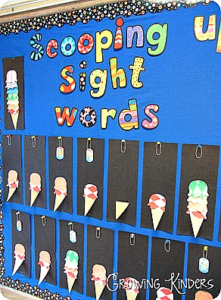
SOURCE: Growing Kinders
Have something to add? We’d love to hear from you! Share your thoughts and opinions in the comments below.
This blog was originally published on We Are Teachers. Click here to view.

